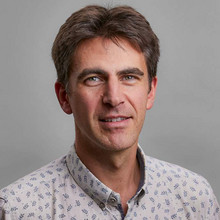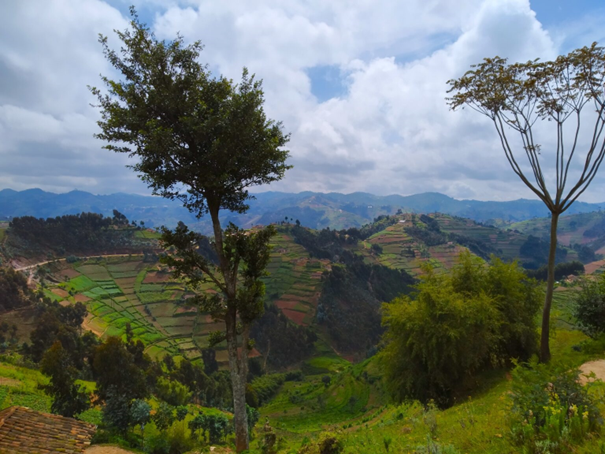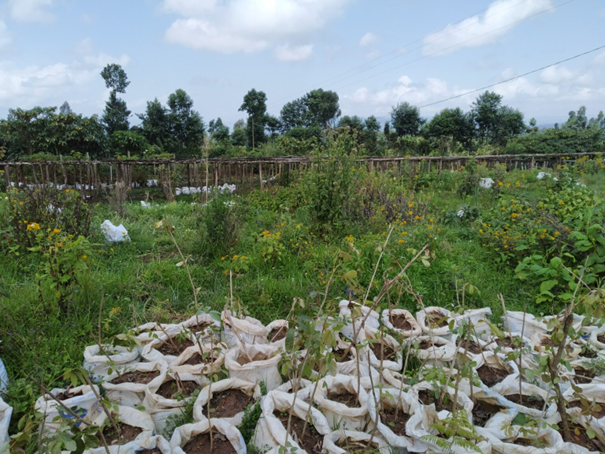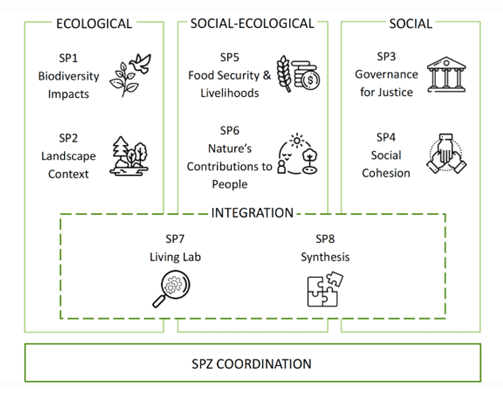Biodiversity loss, land degradation and climate change. Not a rosy outlook for 2024… Nevertheless, researchers are tirelessly searching for solutions. To that end, Joern Fischer is the coordinator of a DFG funded research unit entitled “A Social-Ecological Systems Approach to Inform Ecosystem Restoration in Rural Africa”. The research unit asks how ecosystems can be restored and looks at the ecological, social and social-ecological consequences of restoration measures.
Joern, you will spend a lot of time researching restoration of ecosystems in 2024. Why this topic of all possible topics?

A lot of damage has been done by humanity and it’s time to learn how to undo some of the damage. Restoration is one way of trying to do that. What I like about restoration is that it’s trying to do something positive rather than just trying to limit the negative that we’re doing. I like the idea of working on something that actually improves things.
What are your Good New Year’s resolutions that you have set yourself for this project?
The main thing is that we get off to a good start with the whole project team. At the end of January and early February, we have a kick-off meeting in Rwanda. One day will be solely devoted to meeting academics from the University of Rwanda and other academics in Rwanda. And the second day will be devoted to meeting NGO and government stakeholders. It’s super important for the project that we start to build relationships with our colleagues in Rwanda.
You want to develop a social-ecological systems approach to ecosystem restoration. What exactly does that mean?
The key thing about a social-ecological systems understanding as opposed to an ecological understanding with a bit of social science on top is that we are fundamentally interested in the interrelationship between people and nature. We see that the ecosystem provides benefits or disbenefits to people, and people shape the landscape through how they use and care for it.
A social-ecological systems understanding of restoration means that we don’t prioritize from the beginning either the ecology or the people. But we always think of this interrelationship. Conventional restoration thinking has often put the ecosystem first. Then there is this new development in which human wellbeing as an important outcome is emphasised, but this new framing sometimes forgets the ecosystems… We want to think about the interrelationship at all times, and do well in both dimensions.
What are your concrete plans for the project in 2024?
In addition to the kick-off workshop, we also have the first scoping field trips with the entire project team. We’ll be traveling around in multiple cars to different restoration sites to see how we implement the research we’ve planned. The social scientists with their savvy social science eyes and the ecologists looking at the landscape with the ecological eyes.
It’s a bit of a logistic nightmare right now but will be fun to have everyone out in the field at the same time and this will help to build the team and sharpen our research questions. Around May we will start with the actual field work and collect data.
What kind of data?
For example, data on vegetation and the different types of restored landscapes and not-restored landscapes, socio-economic surveys of households and interviews with people on how their livelihoods have changed with restoration activities. Afterwards it’s time to make sense of the first bits of data and try to see how everything comes together.
How is the project organised?
We have eight subprojects. Among them are a synthesis project and a so-called living lab where we co-create innovative restoration solutions together with local stakeholders.
How do you implement your research in practice?
We will focus on what we call social-ecological units. These might be certain parts of a certain landscape, and we will have many of these social-ecological units scattered throughout the region that we’re studying. The social scientists, the ecologists, the social-ecological scientists all focus on the same social-ecological units from their perspective. Sharing social-ecological units is going to be really helpful to integrate our findings later on.
What questions are you asking in 2024 to move the project forward?
For example, how have different types of restoration activities changed the vegetation and its biodiversity, structure and also function across the landscape? How has land cover changed over the last few decades? We also plan to reconstruct the historical trajectory before restoration, and then analyse the changes in landscape pattern as a whole. We will also start to look at households and their economies, asking how people are benefiting from restoration.
What answers and solutions are you hoping for in the Rwanda project in 2024?
Most importantly, we will have established the first rudimentary understanding of our social-ecological units. There are places in the landscape that are extremely diverse, where within just a few hundred meters you find banana plantations, home gardens, woodlot plantings, agroforestry sites, all within one little circle of just a couple of hectares or something. Then there are other places where it’s much more homogenous and you might have an entire hill covered by agroforestry. These places are very different, and we will start to have a first understanding how such places differ in terms of their social, but also their ecological outcomes.
We will also start to have a much better understanding of the key stakeholders in restoration and their dynamics, and quantify the quality of restoration already done. For example, a lot of the planting that is being done is eucalyptus trees, which are not native. Eucalypts are great in some ways, for example to stabilize soils or provide firewood. But ecologically they really aren’t that great. We will have a much better understanding of how restoration to date is working or not working after this first year.
Why did you choose Rwanda as the location for the research?
In 2012, the International Union for the Conservation of Nature together with the German government, launched the so-called Bonn Challenge. Different countries around the world pledged different amounts of land to be restored. Rwanda made one of the most ambitious pledges of all countries. Rwanda’s land was very heavily degraded, and hence, there’s a lot of potential for restoration. Rwanda recognized that for its people to survive and thrive, ecosystems need to be restored. There is a very strong, genuine interest by the Rwandan government to restore landscapes. And they’re interested in also learning from scientists what works well and what doesn’t work well. That makes it a nice testing ground for social-ecological restoration.
How do you feel about 2024 from a sustainability perspective?
I suspect things are going to get worse for the world for a little bit longer until they get better. And that sounds terribly negative, but I’m not even sure that it’s negative as such. Change has always been part of the world. And right now, I think unfortunately we’re seeing a series of changes that are very rapid and, in many cases, not very good for sustainability.
From a more hopeful perspective: We have this very unstable world right now. Instability is usually a sign of change. When systems become quite unstable, it means something’s going to change. And so, I think sooner or later things will change. But for now, I would predict that it’s going to continue to get worse before it gets better.
What could be the role of this project in Rwanda to shape this change?
The nice thing about our focus is that a lot of restoration is happening anyway, in Rwanda and elsewhere. The restoration is not happening because of us. We’re just researching it. As we’re coming up with findings and hopefully if we can develop good relationships with stakeholders, our findings are naturally interesting to the people there, to the stakeholders involved, to the government, to the NGOs involved. Often there’s money for implementing restoration actions, but not necessarily money to research in depth what works and what doesn’t work. If we can provide some insights for how restoration can be done better, then it can generate even better benefits for people or nature. And that’s where our research can really make a difference because there will be more trees planted and restoration activities going on in the future anyway.
Another thing is capacity building. We’re training some Rwandan colleagues, for example, as PhD students in our team and hopefully we’ll also be collaborating with the University of Rwanda in some other ways to build capacity.
Explore the research project here.
Text by Mareike Andert



